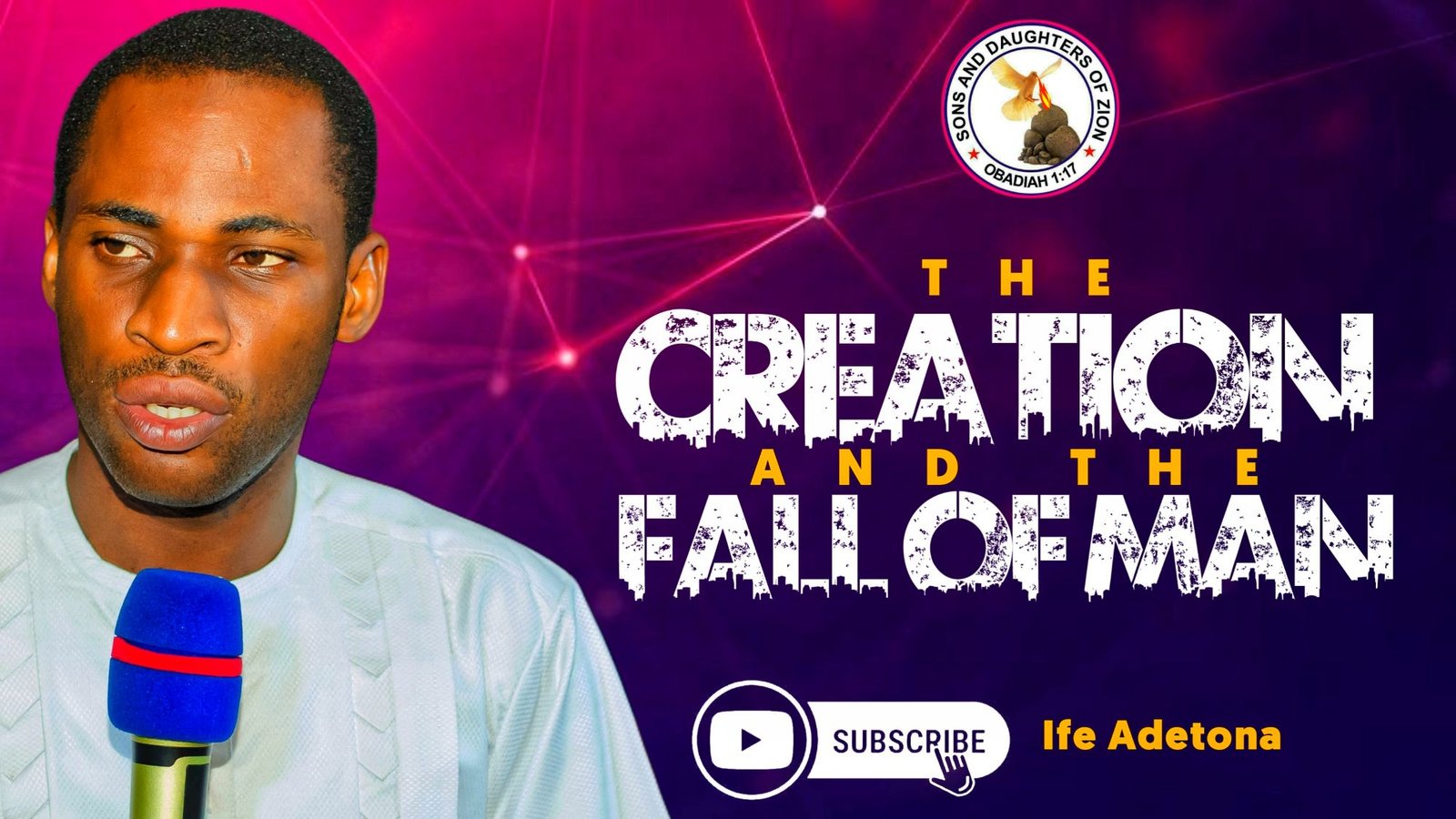Tonight, we are discussing the Creation and the Fall of Man, as narrated in the first chapters of Genesis. Though these chapters appear brief, they are some of the most profound verses in Scripture, filled with deep mysteries.
Creation of Man:
The first man, Adam, is introduced in Genesis 1:26:
*And God said, Let us make man in our image, after our likeness: and let them have dominion over the fish of the sea, and over the fowl of the air, and over the cattle, and over all the earth, and over every creeping thing that creepeth upon the earth.*
God’s intention to create man was evident from the beginning. He created man in His image and likeness, meaning that man shares some characteristics with God. For instance, God has fingers, feet, and eyes as described in Scripture, and so does man.

The Image of God:
John 4:24 states that God is Spirit, hence the image of God is Spirit. When God created man in His image, He made man a spirit.
Formation of Man:
Genesis 2:7 describes the formation of man from the dust of the ground, into which God breathed the breath of life, making man a living soul. The body formed from dust is the casing, the spirit is the essence, and the soul is the connector between the body and the spirit.
The Fall of Man:
Genesis 3:6 recounts the temptation and fall:
*And when the woman saw that the tree was good for food, and that it was pleasant to the eyes, and a tree to be desired to make one wise, she took of the fruit thereof, and did eat, and gave also unto her husband with her; and he did eat.*
Contrary to popular belief, Adam was likely with Eve during the temptation. The temptation likely occurred in Eve’s mind, influenced by the serpent’s enticement. Adam’s decision to eat the fruit alongside Eve could be seen as an act of solidarity, akin to the sacrificial love Christ later showed.
Consequences of the Fall:
The serpent, Eve, and Adam each faced consequences. For Adam, the ground was cursed because of his disobedience (Genesis 3:17). This curse extended to all of creation, awaiting redemption (Romans 8:19-21).
The Two Trees in the Garden:
Genesis 2:9 mentions the Tree of Life and the Tree of Knowledge of Good and Evil. The Tree of Life was the tree of immortality, and eating from it would grant eternal life. The Tree of Knowledge of Good and Evil represents self-awareness, conscience, and wisdom. God’s command not to eat from this tree was a test of obedience.
The Significance of the Trees:
– The Tree of Life was intended to be eaten in due time, had man obeyed God.
– The Tree of Knowledge of Good and Evil brought about the awareness of good and evil, leading to conscience and self-reliance.
– Eating from the Tree of Knowledge was an act of independence from God, akin to the prodigal son’s desire for independence.
Aftermath of the Fall:
Adam and Eve, realizing their nakedness, attempted to cover themselves with fig leaves (Genesis 3:7). God, in His mercy, made garments of skin for them (Genesis 3:21), symbolizing the first blood sacrifice and foreshadowing Christ’s redemptive work.
Tree of Life Today:
The Tree of Life is now associated with Christ, who offers eternal life. Revelation 22:2 and 22:14 speak of the Tree of Life in heaven, accessible to those who follow God’s commandments.
The Creation and Fall of Man are foundational to understanding God’s plan for redemption. The narrative underscores the importance of obedience and the dire consequences of sin, while also pointing to God’s ultimate provision for salvation through Jesus Christ.
Leave a Reply